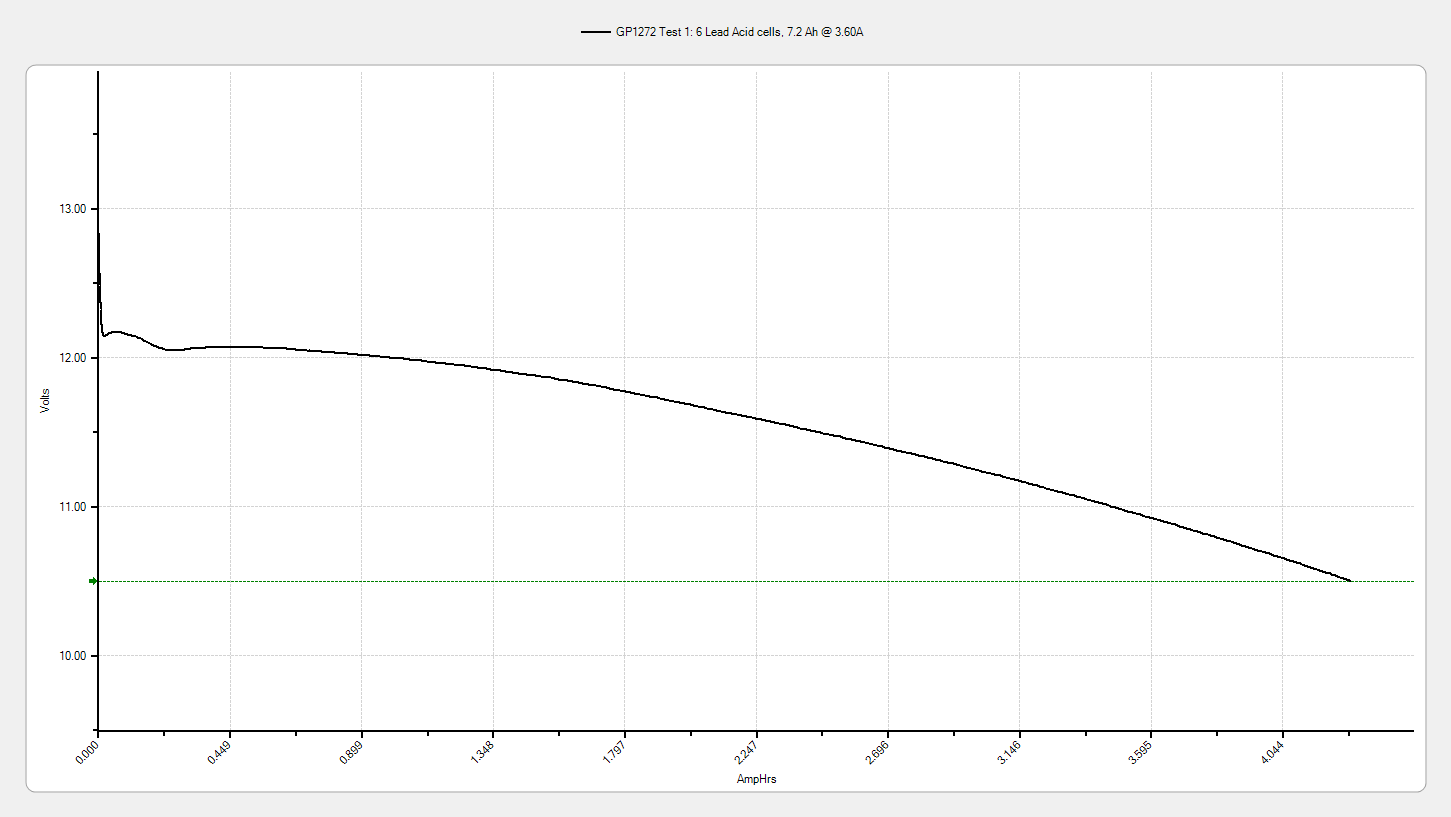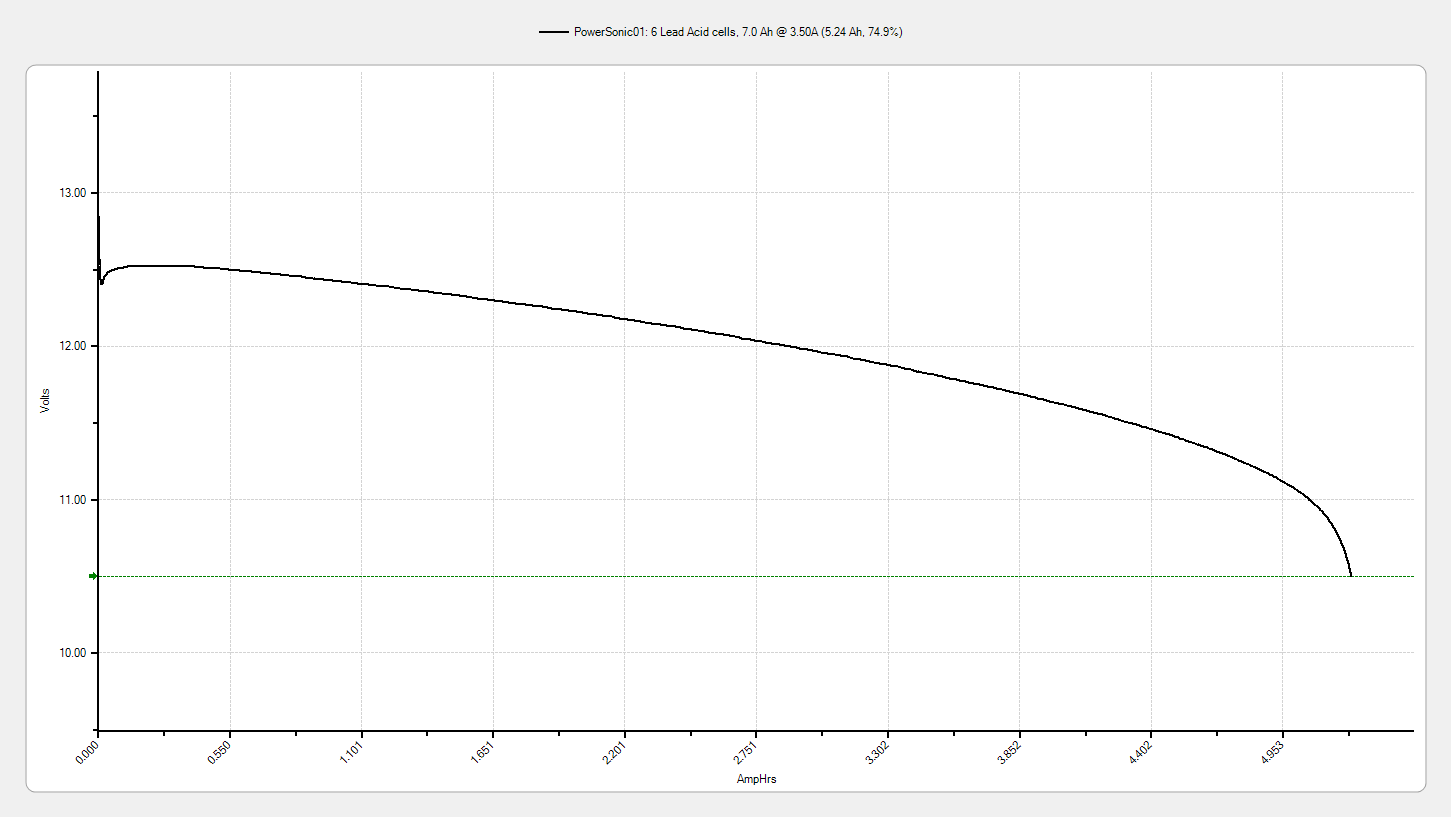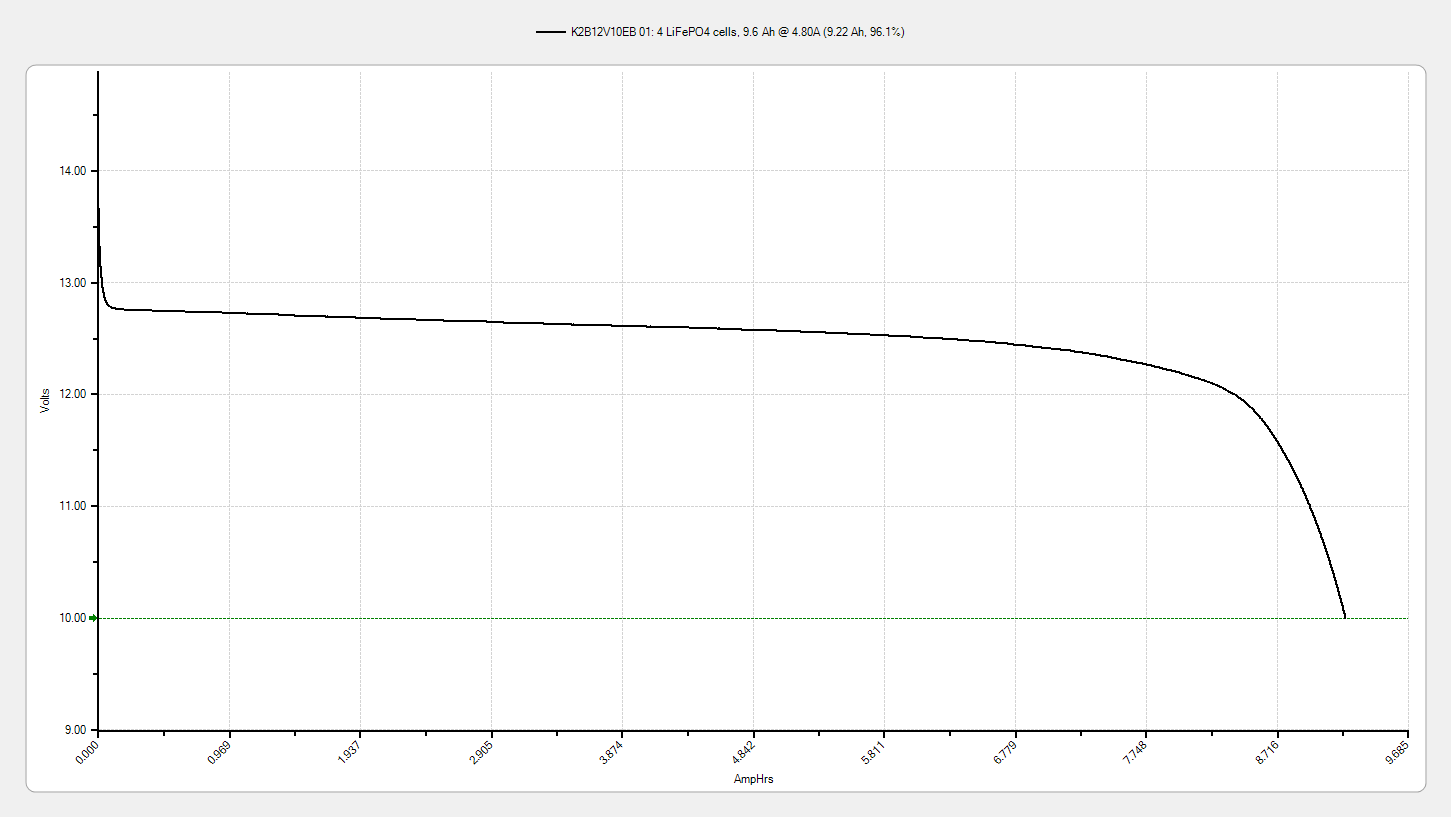Honestly, I keep going on and on about this, but its been a long time since I’ve found something that just keeps amazing me (my Elecraft K3/KX3 and Honda EU2000i fall into that category), and LiFePO4 batteries are one of those things. Their operating range just seems to fall into the sweet spot for ham applications.
When I’ve compared my SLA battery to my LiFePO4 battery in C/2 discharge tests, it was apparent that the SLA battery was not performing anywhere close to its nameplate rating but I was worried that the age of the battery might have a significant impact. So I purchased another SLA battery and cycled it a half dozen times (C/20 discharge and charge) to ensure it was “fresh” then reran the tests. I also retested my K2 Energy battery, which will be 2 years old in January, along with a similar age SLA battery.
Lets begin with the test of my 2 year old “GP” SLA battery, whose nameplate capacity is 7.2 AH, so the C/2 discharge rate is 3.6 Amps. It reached its cutoff voltage and illustrated a discharge capacity of about 4.3 AH (or about 60% of nameplate). Withing 15 minutes its terminal voltage was at 12.0 volts, and was at 11.0 volts after 56 minutes:
Here are the results for my brand new Powersonic PS-1270. It is rated at 7.0AH, so the C/2 discharge current is 3.5 Amps. It fared a bit better, being newer, hitting the cutoff voltage after 5.25 AH (75%). This battery remained above 12.0 volts for almost 50 minutes, and was at 11.0 volts after 88 minutes:
Both of those SLA Batteries illustrate several problem of SLAs:
- Their terminal voltage is not very stable
- They don’t provide their nameplate capacity under real-world circumstances C/2 load vs C/20
- Their capacity declines with age
Now examine the discharge curve of my almost 2-year old LiFePO4 battery. Since it has a nameplate rating of 9.6 AH, the C/2 discharge current is 4.8 Amps. It reached its cutoff voltage (10.0 volts actually higher than the 8.0 spec) with a capacity of 9.2AH (96% of nameplate). The battery remained above 12.0 volts for 105 minutes, and above 11.0 volts for 113 minutes).
It should be immediately obvious that the discharge curve is MUCH flatter. Essentially the battery remains around 12.7 volts for about 85 minutes then took another 20 minutes to drop down to 12.0 volts. This higher operating voltage is a real blessing for 12 volt ham gear, which was really designed to operate on a 13.8 volt supply.
And I should mention that the correct cut-off voltage for this battery is actually 8.0 volts, so, in fact, had I let it discharge that far, I probably would have seen a couple % more capacity (96%), and the battery age doesn’t seem to have a huge impact.
So what’s the bottom line? SLA batteries don’t come very close to their nameplate capacity when operated at a C/2 load. And although two points don’t make a great trend, it appears that they suffer capacity loss over time (not surprising). On the other hand the LiFePO4 battery is still very close to its nameplate capacity even after 2 years of use.
Perhaps more importantly, while the LiFePO4 battery has a terminal voltage above 12 volts for about 85% of its capacity, the SLA battery will drop below 12 volts after less than half its capacity has been used.
This LiFePO4 battery will last 4-5 times longer than a SLA, will keep 75% of its capacity or more after sitting idle on a shelf for a year, and weighs about half what the SLA battery does. Plus it is not hazardous waste.
In the future I will rerun the tests at 2 Amps for all three batteries, which is the current draw of the Elecraft KX3 on full power, and will terminate the test at 10.5 volts, which is the minimum recommended discharge voltage for a 12V SLA.












Hi ,
Thank you for producing and leaving info like this on the web for us.
Regards,
Rob
KC9LGS